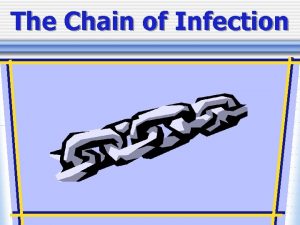DYNAMICS OF DISSOLVED ORGANIC MATTER IN A SHALLOW

- Slides: 1

DYNAMICS OF DISSOLVED ORGANIC MATTER IN A SHALLOW DANISH ESTUARY Søren Laurentius Nielsen, ENSPAC, Roskilde University, Denmark Troels Møller Pedersen, ENSPAC, Roskilde University, Denmark Stiig Markager, Aarhus University, Denmark Kaj Sand-Jensen, University of Copenhagen, Denmark RUC Roskilde University This study presents data on dissolved organic matter, collected through an annual cycle in a shallow Danish estuary, Roskilde Fjord. The different DOM fractions initially appeared to behave conservatively when evaluated against salinity. However, isotopic mixing models based on stable isotope ratios of carbon and nitrogen reveal that conservative mixing models based on DOM concentration and salinity mask estuarine processes altering the DOM pool. Our data suggest an accumulation of DON especially in the inner parts of the estuary potentially as release from both sediment and phytoplankton. Roskilde Fjord, Denmark, is microtidal, and salinity varies from about 7 psu in the innermost part to some 23 psu at the mouth, opening to Kattegat. Roskilde Fjord receives freshwater input from several smallish streams along the whole estuary Average estuarine δ 15 N-DOM and δ 13 CDOM values from autumn show that DOM at the inner station (E 1) has the highest terrestrial signal. DOM at St. 2, on the other hand, is depleted in 13 C which could be explained by autochthonous DOC production. St. 3 and 4 had similar δ 13 C-DOM values but the DOM at St. 4 was more depleted of 15 N. During spring the pattern changed and the isotope composition of DOM at St. 1 and St. 2 (E 1 and E 2) was enriched in δ 13 C and depleted of δ 15 N compared with autumn averages. All DOM fractions – DOC, DON and CDOM (expressed as a 375) would initially appear to be conservatively mixed – i. e. no production or decomposition in Roskide Fjord. Note initial disappearance of 20 – 30 % of DOC and CDOM The δ 13 C-DOM mixing curve (A and B) follows a nonconservative isotope mixing both in autumn and in spring. The δ 15 N-DOM mixing curve shows 15 N depletion in autumn at the inner stations while the two outer stations follow the expected conservative distribution (C). In spring, DONconcentrations at all stations are depleted compared to the expected conservative distribution. Schematic relationship between the ratio of DIN: DOC in loadings and the autochthonous to allochthonous DOC ratio (au. DOC: al. DOC) illustrating the potential effect of residence time and production rate. The line represents the ratio assuming that autochthonous DOC is produced from DIN at the Redfield ratio (C: N=6. 2). The annual average of DIN: DOC loadings for Horsens Fjord and Roskilde Fjord are 0. 45 and 0. 19 (mol basis), respectively. This is equal to a au. DOC: al. DOC ratio at Redfield ( ) of 2. 68 for Horsens Fjord and 1. 22 for Roskilde Fjord. Estimated au. DOC: al. DOC are approximately 4 in both Roskilde Fjord and Horsens Fjord placing them above the Redfield line (� ) The mechanisms controlling concentrations of DON, DOC and CDOM seem to be dilution most of the year (conservative mixing). However, isotopic mixing models reveal that conservative mixing models based on DOM concentration and salinity mask estuarine processes altering the DOM pool. Isotope analysis of DOM reveals a high terrestrial/refractory signal in November-December whereas biochemical processes alter the DOM pool in spring.

